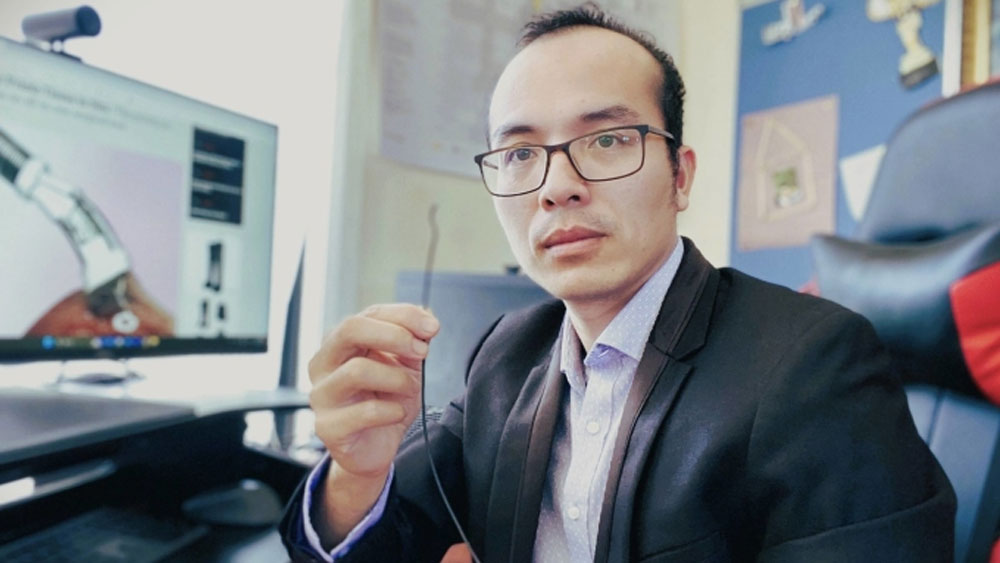Vietnamese scientists invent robot arm for 3D printing inside human body
The research group from the university's medical robot lab, helmed by Do Thanh Nho and Mai Thanh Thai, have created a soft robotic system for in situ 3D bioprinting and endoscopic surgery (F3DB). Their study was published on the Advanced Science journal in March.
 |
|
Dr. Do Thanh Nho holds the soft robotic catheter that he invented with his team. |
The device is capable of bending movements, and at its end is a printing head for 3D bioprinting.
Movements are facilitated by hydraulic pressures.
Thanks to its small size, the robotic arm can slip inside the human body and directly 3D print on organs and tissues. The printed structures would be compatible with the human body and can be used to repair damaged tissues.
The group has filed for a patent for the invention.
Until now there has been no device capable of directly printing structures inside a living person.
Nho, director of the lab, said the project was launched in 2021 as the culmination of extensive research by him and his partners.
He met several biomaterial researchers and asked them how it could be 3D-printed inside the human body, and most told him that would require an open surgery.
But the risk of bleeding and infection made him hesitate.
He said now 3D bioprinted structures are made outside the body and could break during the process of grafting.
They might also not be compatible with tissue surfaces, making them less than optimal, and that was why his group embarked on creating a device that could print materials directly on tissues, he explained.
The group tested the device on artificial and animal organs and with various biomaterials to achieve the exact shape.
Patients who need organs replaced or whose organs are damaged can benefit from the technology since the cost of F3DB is low and each could be used just one time to prevent infection.
Nigel Lovell, head of the Graduate School of Biomedical Engineering at the University of New South Wales, said the F3DB technology is a novel one and could create a revolution in 3D printing and endoscopy.
Nho, 38, was born in the southern Tay Ninh Province. He studied in the HCMC University of Technology before receiving a full scholarship from the Nanyang Technological University in Singapore.
He then became a post-PhD researcher at the University of California in the U.S. and a Scientia professor at the University of New South Wales.
Source: VnExpress
 Bắc giang
Bắc giang













Reader's comments (0)